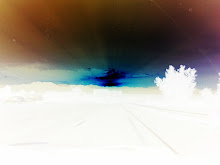November 30 2016
We continued to travel south in Sabah and stopped along the Kinabatangan river for a night. The area still has stands of jungle along its banks that have been protected from the fate of becoming yet more oil palm plantations. The result is relatively high density of wildlife living between the river and the plantations that can be easily seen from eco-tour boats along the river. We chose a local "home stay" option for sleeping, but there are also various eco and jungle lodges of varying levels of roughing it.
We enjoyed the ethics of this company: (Link to Mescot.org sustainable eco tourism)
We also stopped off in the morning at the co-op’s eco camp for a short hike and our picnic breakfast beside a lake with a pair of noisy otters.
We continued to travel south in Sabah and stopped along the Kinabatangan river for a night. The area still has stands of jungle along its banks that have been protected from the fate of becoming yet more oil palm plantations. The result is relatively high density of wildlife living between the river and the plantations that can be easily seen from eco-tour boats along the river. We chose a local "home stay" option for sleeping, but there are also various eco and jungle lodges of varying levels of roughing it.
We enjoyed the ethics of this company: (Link to Mescot.org sustainable eco tourism)
We took a sunset boat ride as well as a dawn ride. We got to see proboscis monkeys, macaques, a few orangutans, a flying lemur, hornbills, kingfishers, etc., and glimpsed a crocodile. Alas, we were not lucky enough to spot a pigmy elephant.
Later in the morning we traveled to a set of limestone caves that were used as sarcophagi approximately 700-900 years ago.
Within are the remains of some of the 40+ ironwood coffins placed at the site.













No comments:
Post a Comment